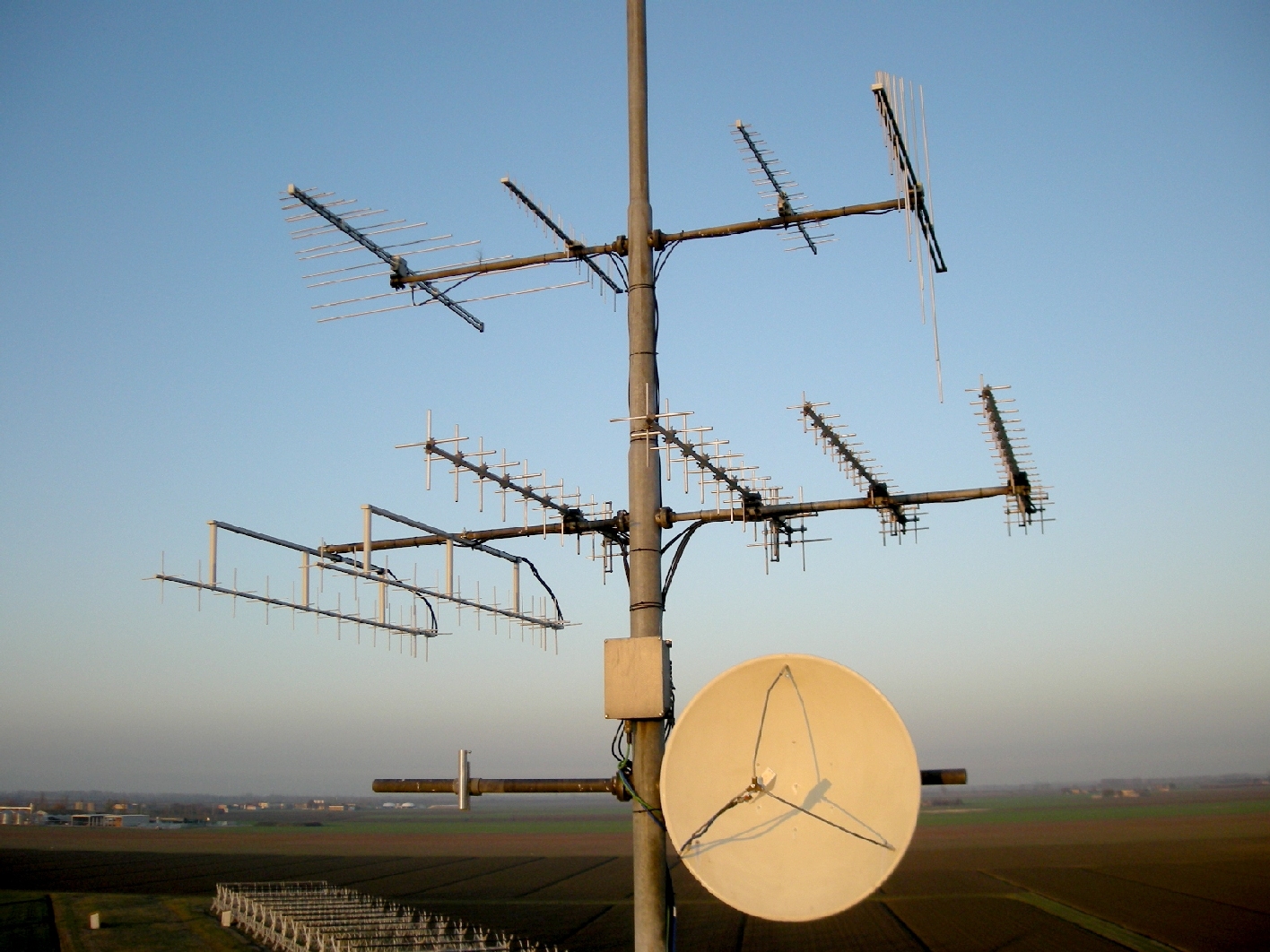 |
|
| HOME → Interference Monitoring | |
|
|
|
|
The radioastronomical bands protection Radio telescopes are large antennas that are used to study naturally occurring radio emission from stars, galaxies, quasars, and other astronomical objects, between wavelengths of about 10 meters (30 megahertz [MHz]) and 1 millimeter (300 gigahertz [GHz]). By international agreement and Italian regulations, a number of frequency bands in this range are allocated to radio astronomical research. The radio signal (its spectral power flux density) arriving on Earth from astronomical objects is in fact extremely weak – typically a million billion of times (0.0000000000001%) weaker than the signal by an FM radio station.
RF spectrum up to 2.5GHz Since radio telescopes are extremely sensitive receiving devices, transmitting is generally prohibited in the radio astronomy bands. However, transmitters using frequencies near those assigned to radio astronomy can cause radio interference (RFI) to radio telescopes. This problem mainly occurs at low frequency (VHF and UHF bands), where strong emissions due to FM radio broadcasts, television, cellular telephone, radar, radio link, etc. may be found. In some case the transmitter's output is unduly "broad," spilling over into the radio astronomy frequencies, or the transmitter emits frequencies outside its intended range. Other interference arises because radio transmitters often unintentionally emit spurious signals or at multiples of their intended frequency. At the Radioastronomical Station of Medicina the presence of RFI over the main radiastronomical bands is kept constantly under control by the Center for RFI monitoring. The center consists of the following facilities: 1) a 25-m high tower equipped with a senstive receiving systemThis system is composed of 11 antennas (Log-periodic, Yagi, parabolic dish, in both single and double polarization) connected to a device wich performs the selection, filtering and pre-amplification of the received radio signal. It is fully steerable on the horizontal plane (0-360 °) and can be remotely controlled. The frequency coverage of the receiving system currently allows RFI monitoring within a range of 300 MHz - 12 GHz. |
|
|
G. Bianchi |
|


